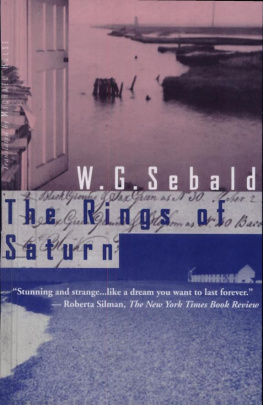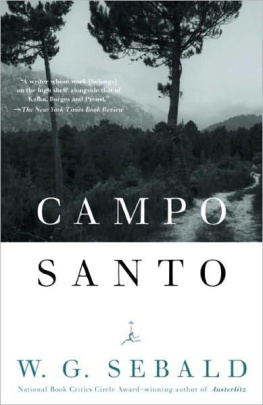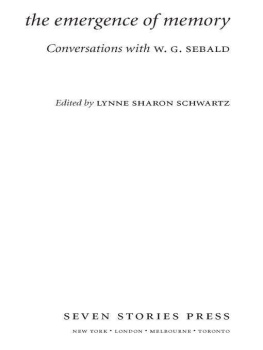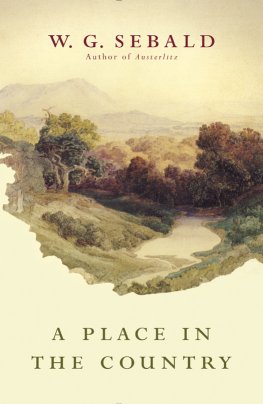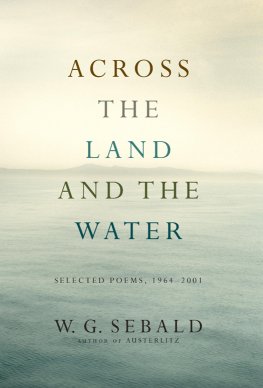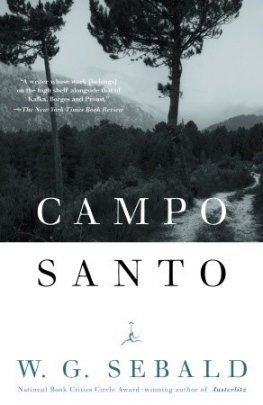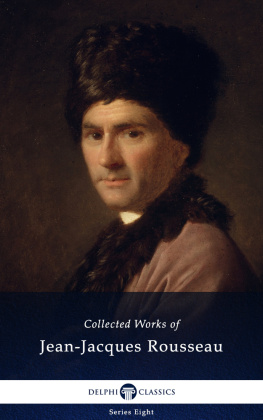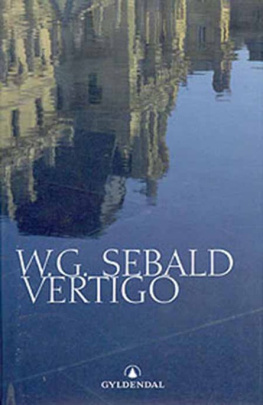W.G. Sebald - A Place in the Country
Here you can read online W.G. Sebald - A Place in the Country full text of the book (entire story) in english for free. Download pdf and epub, get meaning, cover and reviews about this ebook. year: 2014, publisher: Random House, genre: Detective and thriller. Description of the work, (preface) as well as reviews are available. Best literature library LitArk.com created for fans of good reading and offers a wide selection of genres:
Romance novel
Science fiction
Adventure
Detective
Science
History
Home and family
Prose
Art
Politics
Computer
Non-fiction
Religion
Business
Children
Humor
Choose a favorite category and find really read worthwhile books. Enjoy immersion in the world of imagination, feel the emotions of the characters or learn something new for yourself, make an fascinating discovery.

- Book:A Place in the Country
- Author:
- Publisher:Random House
- Genre:
- Year:2014
- Rating:3 / 5
- Favourites:Add to favourites
- Your mark:
A Place in the Country: summary, description and annotation
We offer to read an annotation, description, summary or preface (depends on what the author of the book "A Place in the Country" wrote himself). If you haven't found the necessary information about the book — write in the comments, we will try to find it.
This beautiful hardcover edition, with a full-cloth case, includes more than 40 pieces of art and 6 full-color gatefolds, all originally selected and laid out by W. G. Sebald.
This extraordinary collection of interlinked essays about place, memory, and creativity captures the inner worlds of five authors and one painter. In his masterly and mysterious stylepart critical essay, part memoirSebald weaves their lives and art with his own migrations and rise in the literary world.
Here are people gifted with talent and courage yet in some cases cursed by fragile and unstable natures, working in countries inhospitable or even hostile to them. Jean-Jacques Rousseau is conjured on the verge of physical and mental exhaustion, hiding from his detractors on the island of St. Pierre, where two centuries later Sebald took rooms adjacent to his. Eighteenth-century author Johann Peter Hebel is remembered for his exquisite and delicate nature writing, expressing the eternal balance of both the outside world and human emotions. Writer Gottfried Keller, best known for his 1850 novel Green Henry, is praised for his prescient insights into a Germany where the gap between self-interest and the common good was growing ever wider.
Sebald compassionately re-creates the ordeals of Eduard Mrike, the German Romantic poet beset by mood swings, depression, and fainting spells in an increasingly shallow society, and Robert Walser, the institutionalized author whose nearly indecipherable scrawls seemed an attempt to duck down below the level of language and obliterate himself (and whose physical appearance and year of death mirrored those of Sebalds grandfather). Finally, Sebald spies a cognizance of deaths inevitability in painter Jan Peter Tripps lovingly exact reproductions of life.
Featuring the same kinds of suggestive and unexplained illustrations that appear in his masterworks Austerlitz and The Rings of Saturn, and translated by Sebalds colleague Jo Catling, A Place in the Country is Sebalds unforgettable self-portrait as seen through the experiences of others, a glimpse of his own ghosts alongside those of the men who influenced him. It is an essential addition to his stunning body of work.
Praise for A Place in the Country
Measured, solemn, sardonic . . . hypnotic . . . [W. G. Sebalds] books, which he made out of classics, remain classics for now.Joshua Cohen, The New York Times Book Review
In Sebalds writing, everything is connected, everything webbed together by the unseen threads of history, or chance, or fate, or death. The scholarly craft of gathering scattered sources and weaving them into a coherent whole is transformed here into something beautiful and unsettling, elevated into an art of the uncannyan art that was, in the end, Sebalds strange and inscrutable gift.Slate
Reading [A Place in the Country is] like going for a walk with a beautifully talented, deeply passionate novelist from Mars.New York
Out of exquisitely attuned feeling for the past, Sebald fashioned an entirely new form of literature. Ive read his books countless times trying to understand how he did it. In the end, I can only say that he practiced a kind of magic born out of almost supernatural sensitivity.Nicole Krauss
W.G. Sebald: author's other books
Who wrote A Place in the Country? Find out the surname, the name of the author of the book and a list of all author's works by series.

